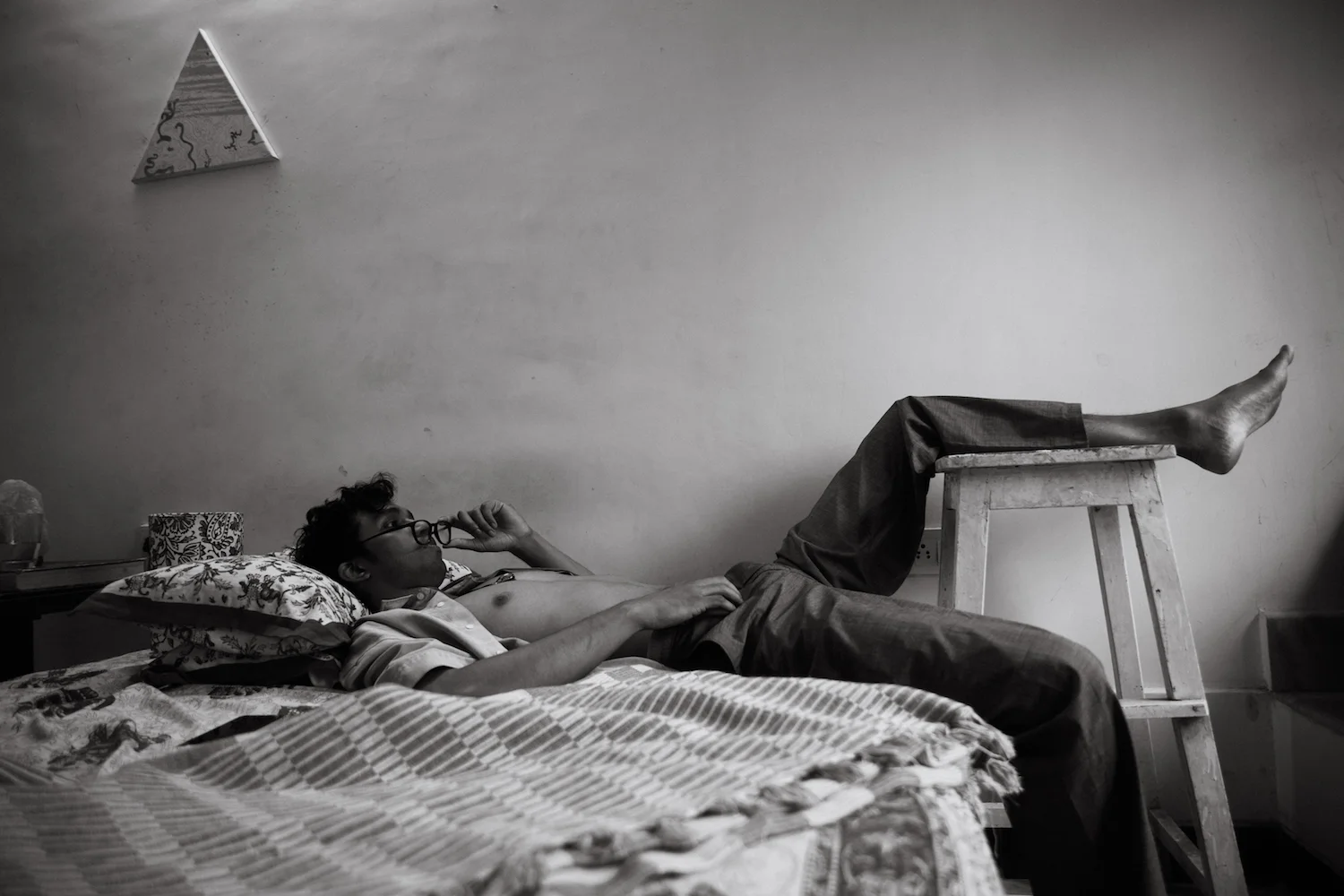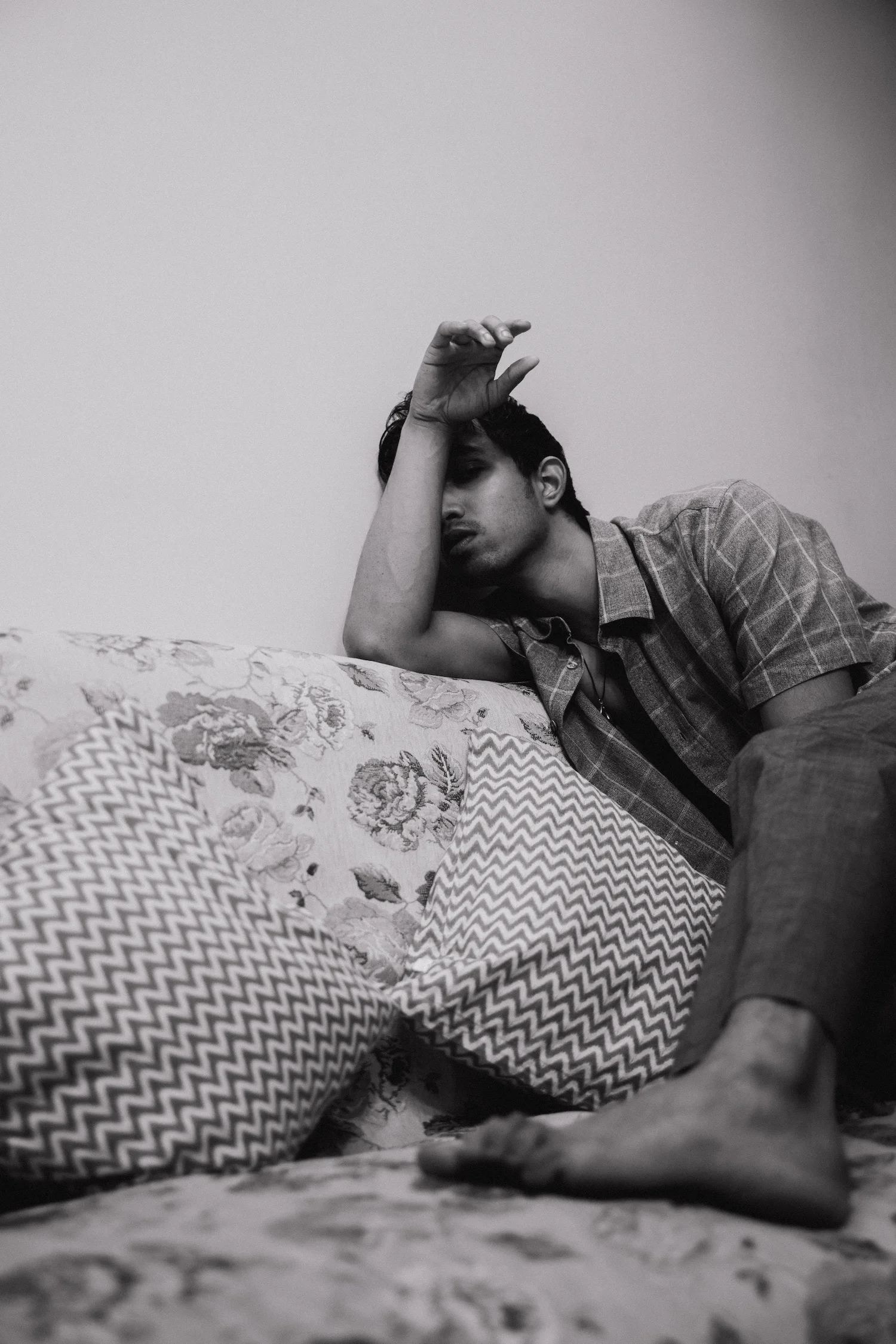There is likely to be some sort of meandering when you pull out an old photograph
(a scratched up print inside a wallet/
an untouched print under glass/
a lonely print that exists only because other prints filled up all the pages before it), and a good place to begin to think about this movement is that stabbing sensation in the gut I’m told is nostalgia.
First we have that initial tug back into the photograph, sitting with the sharp realisation that (this much) time has lapsed since it was taken. That we have moved from a night in the mountains five years ago to this bedroom bathed in afternoon light and everything in between has been left for us to fathom (to recognise, to understand, to fill up, to somehow journey from a winter night to a summer afternoon with god knows how many pairs of rain-destroyed slippers to account for in between) on our own. The photograph exists of a then, and in a now, but the continuity that should have held it together is missing. An effort is made to try and bridge that gap by starting at the very beginning- the evening that it was taken. To sink into the photograph, to grasp at every hint it offers at rebuilding that night with the expectation that we will be welcomed back to relive it exactly as it happened. It’s all going as planned, the seeing just has to catch up with the memory. The dissonance that exists between the way we remember that night and what the picture is showing us hasn’t been acknowledged yet. And before we can explain the rapidly increasing discomfort with the photograph, we’ve done something that is going to make this attempt at reconstruction far more tumultuous than we’d signed up for- we’ve touched it.
We’ve reached out- tenderly, even- and stroked the photograph lying in front of us only to be suddenly, and stingingly, made aware of all that we are not touching. There is only the smooth coldness of paper in place of a warm chest under a scratchy sweater
the flatness of a print that your fingers will search for the rise of veins in- this is not how it felt to hold your hand
the tart smell of ink to show you how much distance (disguised as time) has wedged itself between you and a fragrance that belongs to the night the picture was taken.
The photograph is here, sitting obediently before us, revelling silently in all that it has left behind.
And then we wander in a different direction- not into time but wider around it. The particularities in the photograph begin to allude to universalities. We begin to pay attention to the lengthening capacity of an image- of its potential to let specific elements speak to to a wider range of meaning:
Yes, the wind was sharp that night and the grass was damp and it is always you I think of when the air smells of mogras. But now the photograph also lends itself to other cold nights, and warm nights, and sweaters that hurt less. It has let us pick up something specific from this image and equalise it with the general. Other sunsets. Gentler winds. Perhaps an entire year without any sunsets at all so the photograph begins to feel almost unjust, sitting as easily as it does in that box. We’re presented with the distinctness of the event recorded, but also nudged towards a myriad other memories and possibilities that now live in this print as hyperlinks. An image that was made from a shared evening together is now available to us to use for parts.
Looking at a photograph can be unexpectedly tiring. The visual is jarring in its inadequacy, the image is suddenly linked to memories and ideas that have nothing directly to do with it. It’s an uncomfortable feeling. That’s what that churn in your belly usually is. And the attempt at soothing the ache caused by everything that the photograph hides from us and containing the infinite possibilities that are now carried within it ends up in a little, innocuous gesture- touching the photograph. It is a hopeless act, performed in the quiet awareness that we are too far from what we are searching for. The tenderness comes later.
To look at a photograph and expect to relive a memory is to lose by default. To touch one is to lose twice over, and it probably hurts a lot more.


























